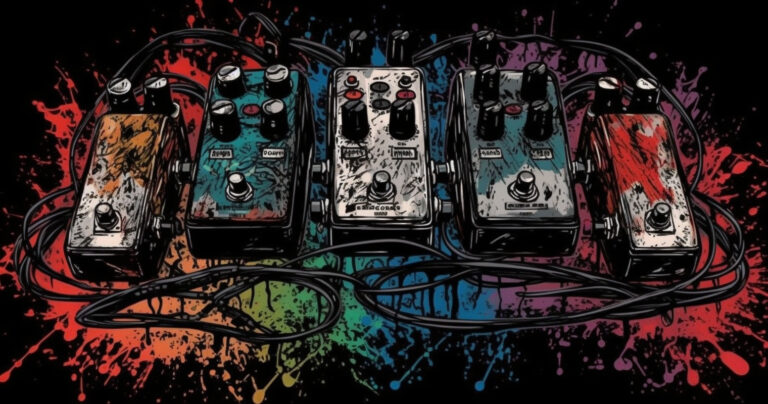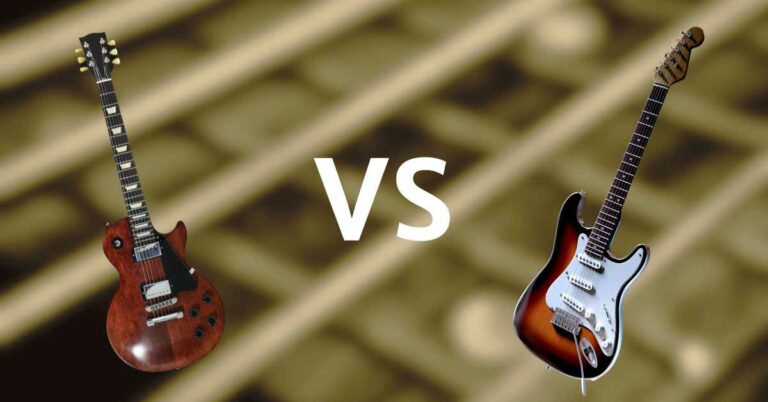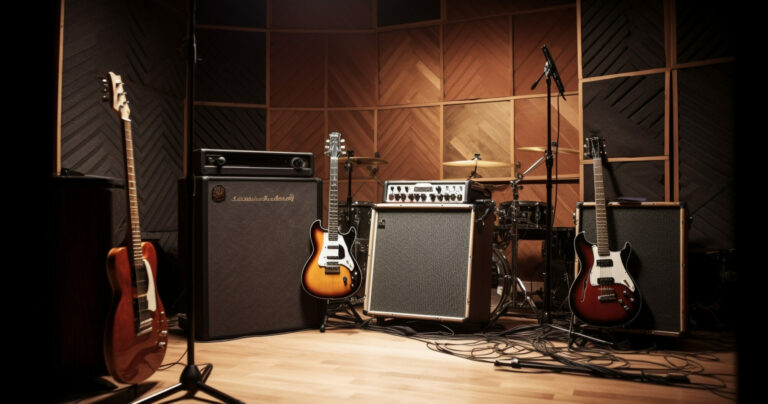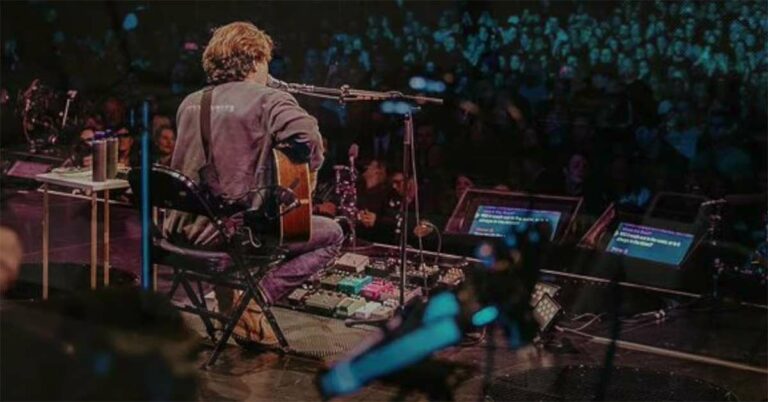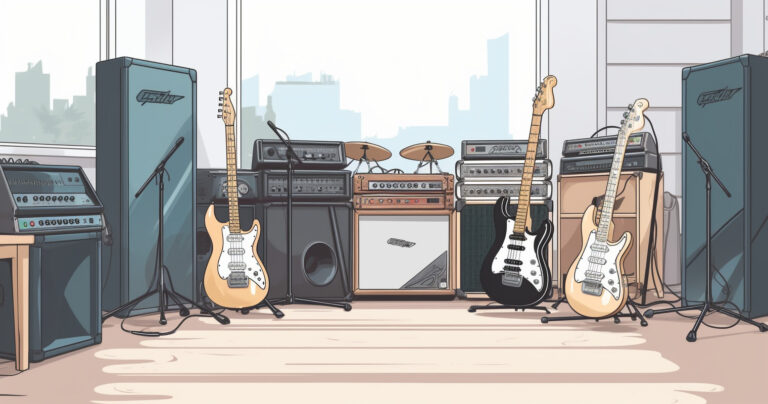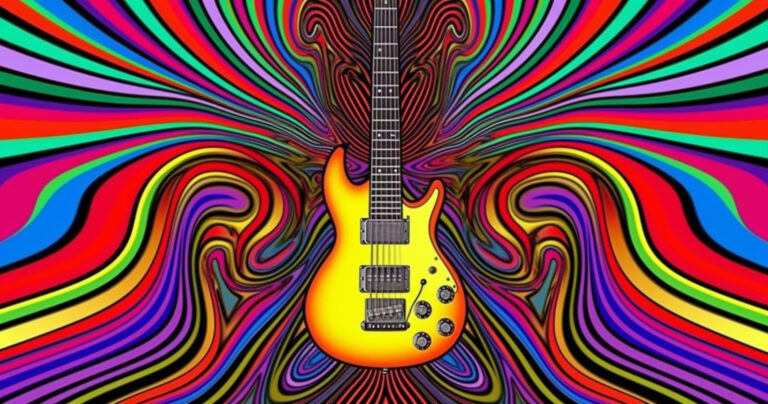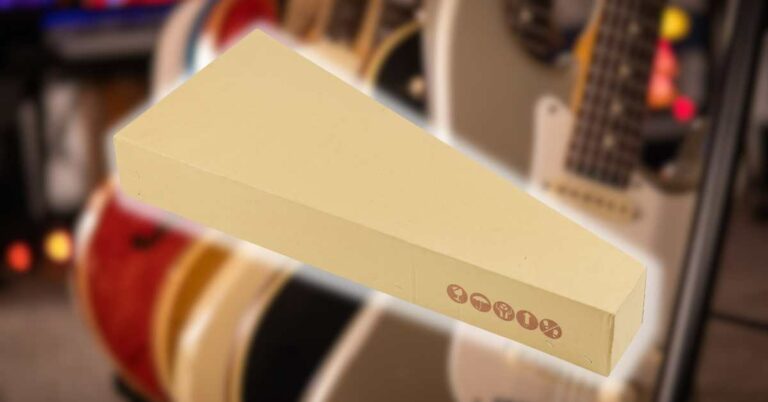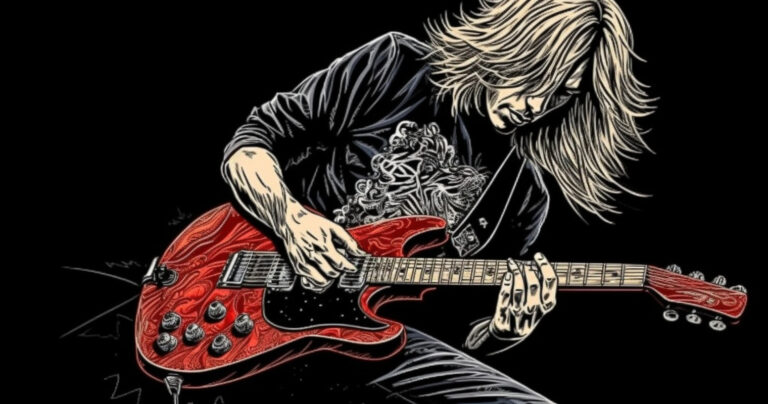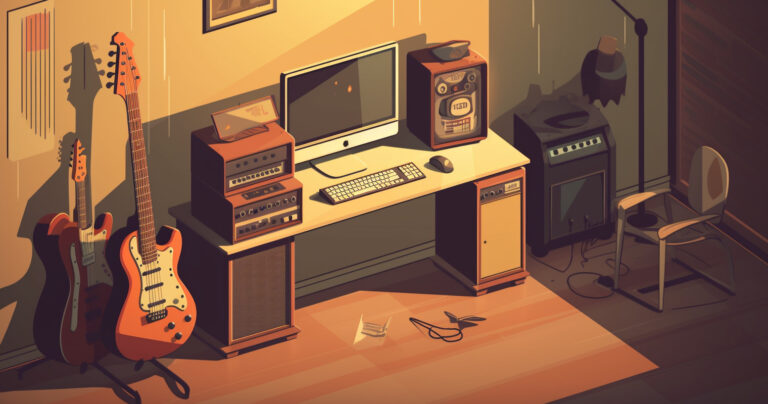Most pedals can use a 9V battery but using batteries can be costly and inconvenient. So guitar players, especially ones that gig, will use a power supply to run their pedals. Pedal power supplies are essential for any guitarist who uses multiple pedals. They provide a reliable and consistent source of power, ensuring that your pedals sound their best and you don’t introduce noise that can be introduced from weak power or split cables.
It can be challenging to choose the right one. In this guide, we will explore the best guitar pedal power supplies in different price ranges. Cheaper power supplies are best for beginners, people who mostly play at home or small pedal boards. As you introduce higher quality pedals, more pedals and start playing gigs, a better supply is usually a smart investment.
How to Choose the Right Guitar Pedal Power Supply
When choosing a guitar pedal power supply, there are a few things to consider. First, you need to make sure the power supply can provide enough power for all of your pedals. Check the power requirements of each pedal and make sure the power supply can handle them.
Second, you need to consider the number of outputs you need. If you only have a few pedals, a smaller power supply will suffice. However, if you have a large pedalboard, you’ll need a power supply with more outputs.
Third, you need to consider the build quality and features of the power supply. Look for a power supply with isolated outputs, short-circuit protection, and overcurrent protection. These features will protect your pedals from damage and ensure they function properly.
Best Power Supplies Under $50
Donner DP-1 Guitar Pedal Power Supply
This power supply is compact and lightweight, making it easy to transport to gigs or practice sessions. It has ten DC outputs, each with a maximum output of 9V/500mA, which is enough to power most pedals. The Donner DP-1 also comes with a variety of cables and adapters, making it compatible with most pedals on the market.
Caline CP-05 Guitar Pedal Power Supply
This power supply has eight DC outputs, each with a maximum output of 9V/100mA. While this may not be enough to power some high-end pedals, it’s perfect for most beginner or mid-range pedals. The Caline CP-05 also comes with a variety of cables and adapters, making it easy to use with different types of pedals.
Best Pedal Power Supplies $50-$100
This power supply has seven isolated outputs, each with a maximum output of 9V/500mA or 12V/375mA. It also has two outputs that can be switched between 9V and 12V depending on your needs. The Truetone 1 Spot Pro CS7 is compact and lightweight, making it easy to transport. It comes with a variety of cables and adapters, as well as a mounting bracket for easy installation on a pedalboard. At around $100, it’s a great value for its quality and versatility.
It has ten isolated outputs, each with a maximum output of 9V/300mA or 18V/150mA. It also has two high current outputs that can provide up to 800mA each. The MXR Iso-Brick is known for its quiet operation and reliability. It comes with a variety of cables and adapters, as well as a mounting bracket for easy installation on a pedalboard. At around $170, it’s a bit pricier than some other options but is worth the investment for its quality and versatility.
This power supply has five isolated outputs, each with a maximum output of 9V/120mA or 12V/90mA. It’s compact and lightweight, making it easy to transport. The T-Rex Fuel Tank Junior comes with a variety of cables and adapters, as well as a mounting bracket for easy installation on a pedalboard. At around $80, it’s an affordable option for those on a budget.
Best Pedal Power Supplies $100 – $500
This power supply is a favorite among many guitarists due to its versatility and reliability. It can power up to eight pedals at once and has two high-current outputs that can handle power-hungry pedals such as digital delays and multi-effects units. The Pedal Power 2 Plus also features isolated outputs, which helps to eliminate noise and hum from your signal chain.
This power supply is a bit more expensive than the Pedal Power 2 Plus, but it offers some unique features that make it worth considering. The Zuma can power up to nine pedals at once and has nine individual outputs that are all isolated. It also has a built-in voltage sag control, which allows you to simulate the effect of a dying battery on your pedals.
This power supply can power up to seven pedals at once and has seven individual outputs that are all isolated. It also features a switchable voltage option, which allows you to choose between 9V, 12V, or 18V for each output. The DC7 is also incredibly compact and lightweight, making it perfect for gigging musicians who need to travel light.
This power supply can power up to seven pedals at once and has seven individual outputs that are all isolated. It also features an adjustable voltage range, which allows you to fine-tune the voltage output for each pedal. The PowerMax also has a built-in LED display that shows you the voltage and current draw for each output.
This power supply can power up to 12 pedals at once and has 12 individual outputs that are all isolated. It also features a switchable voltage option, which allows you to choose between 9V, 12V, or 18V for each output. The CS12 also has a built-in noise filter, which helps to eliminate any unwanted noise or hum from your signal chain.
Common Mistakes to Avoid When Using a Guitar Pedal Power Supply
Using the wrong voltage
Each pedal requires a specific voltage to operate correctly. Using the wrong voltage can damage your pedals or even cause them to stop working altogether. To avoid this mistake, always check the voltage requirements of your pedals before plugging them into your power supply.
Not using a regulated power supply
A regulated power supply ensures that the voltage remains constant, which is essential for maintaining the integrity of your pedals’ sound. Using an unregulated power supply can cause fluctuations in voltage, which can lead to unwanted noise and distortion in your signal chain.
Using too many pedals on one power supply
Pedals require different amounts of current to operate correctly, and using too many pedals on one power supply can cause them to starve for power. This can result in a loss of tone and even damage to your pedals. To avoid this mistake, use a separate power supply for each pedal or invest in a high-quality multi-output power supply.
Not investing in a high-quality power supply
Cheap power supplies may seem like a good deal at first, but they often lack the features and build quality necessary for reliable performance over time. I actually had a friend that gigged with a donner power supply despite having several high end pedals. His supply went out when he got to a gig one day, so he went to Guitar Center and bought the most expensive power supply they sold.
Troubleshooting Tips for Guitar Pedal Power Supply Issues
Even with the best guitar pedal power supply, issues can still arise. Here are some troubleshooting tips to help you diagnose and fix common problems:
– Check your cables: Make sure all your cables are plugged in correctly and securely.
– Check your pedals: Test each pedal individually to see if it’s causing the issue.
– Check your power supply: Test each output to make sure it’s providing the correct voltage and current.
– Use a noise gate: If you’re experiencing noise or hum, try using a noise gate pedal to eliminate unwanted sounds.
– Use a power conditioner: If you’re experiencing electrical interference, try using a power conditioner to filter out unwanted noise.
Conclusion
When I first started putting my pedal together, I had 4 individual power supplies going to pedals and 2 plugs with split cables. I played with so much noise and never realized how bad it really was until I got a dedicated power supply. No matter what your budget is, there is a pedal power supply out there that will meet your needs and help you get the most out of your pedals.












